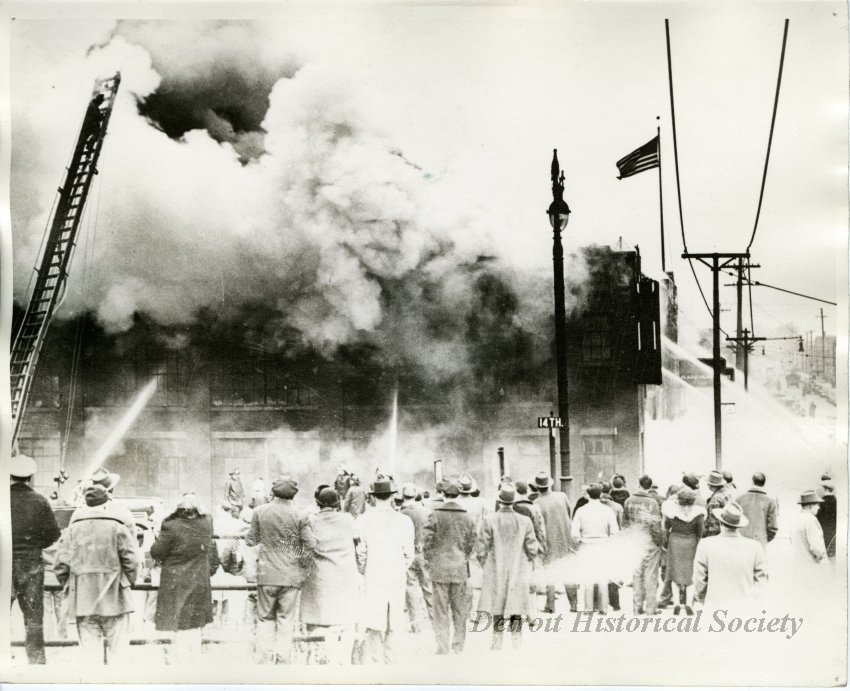At 2:30 pm on December 5, 1944 Detroit Firefighter responded to a call from Box 246. Fire was raging in the second floor sewing room of the National Tent & Awning Company. The company was located at 2150 Bagley (the corner of Bagley and 14th street). Because the fire was fueled by stockpiles of paraffin coated canvas, it spread quickly.
Company president, Elmer C. Ray, was in his 2nd floor office. When he smelled smoke he ran downstairs and discovered the fire. He returned to the second floor to warn employees who were in the office and back rooms of the company.

Employees Trapped
Twenty of the company’s thirty employees were trapped among piles of burning canvas on the building’s second floor. They were forced to escape through windows. Three people were slightly injured when they jumped from second story windows to escape the flames. Others were helped down ladders.
Three women were not able to escape. They perished in the fire. An investigator later discovered they had all passed open doorways to save their coats and pocketbooks before they were trapped by the rapidly spreading blaze.
Cause of the Fire
The cause of the fire was determined to be a carelessly disposed of cigarette or match. The company rules prohibited smoking except in restrooms. During his investigation, Arson Inspector George Smith, discovered that when a foreman left the sewing room employees lit cigarettes.
The floor of the sewing room was made of wood slats. It was old, and in some places there were gaps between the slats wide enough to stick your finger through. It was concluded that an employee discarded a cigarette or match that fell into one of these gaps. The match or cigarette smoldered and eventually ignited.
Fire grew, undetected beneath the floor. Eventually flames rose through the gaps in the floor boards, igniting bundles of canvas stored on the sewing room floor.

National Tent & Awning Company was a manufacturer of canvas covers for Army vehicles. Some of the canvas in the sewing room was coated in paraffin (wax) to make it water-proof. The paraffin ignited, turning the sewing room into a inferno.
As the fire spread, the building’s tar roof added fuel to the flames. The fire went to 5-alarms. At one point, flames leaped 20 feet above a second floor window. It raged for more than 2 hours before being brought under control.
The building was nearly entirely gutted. Nine automobiles, parked in the garages attached to the building, were also destroyed. Firemen prevented the fire from spreading to a newly completed addition to the Roosevelt Park branch of the post office, located next door to the building.
Changes in Fire Prevention Code Enforcement
Although the company had complied with all current ordinances the fatal fire brought attention to the need for better fire prevention codes, and the need to provide enforcement authority to the city’s Fire Marshal.
At this time there was conflict between the authority of safety engineering and the fire department of several large cities in enforcement of fire prevention measures. In Detroit this conflict was coming to a head. The city’s Chief Assistant Corporate Counsel had been working for nearly a year on an a comprehensive Fire Prevention Code. That code would transfer the enforcement of fire prevention measures from the Department of Buildings and Safety Engineering to the Fire Marshal.

Please note: I reserve the right to delete comments that are offensive or off-topic.